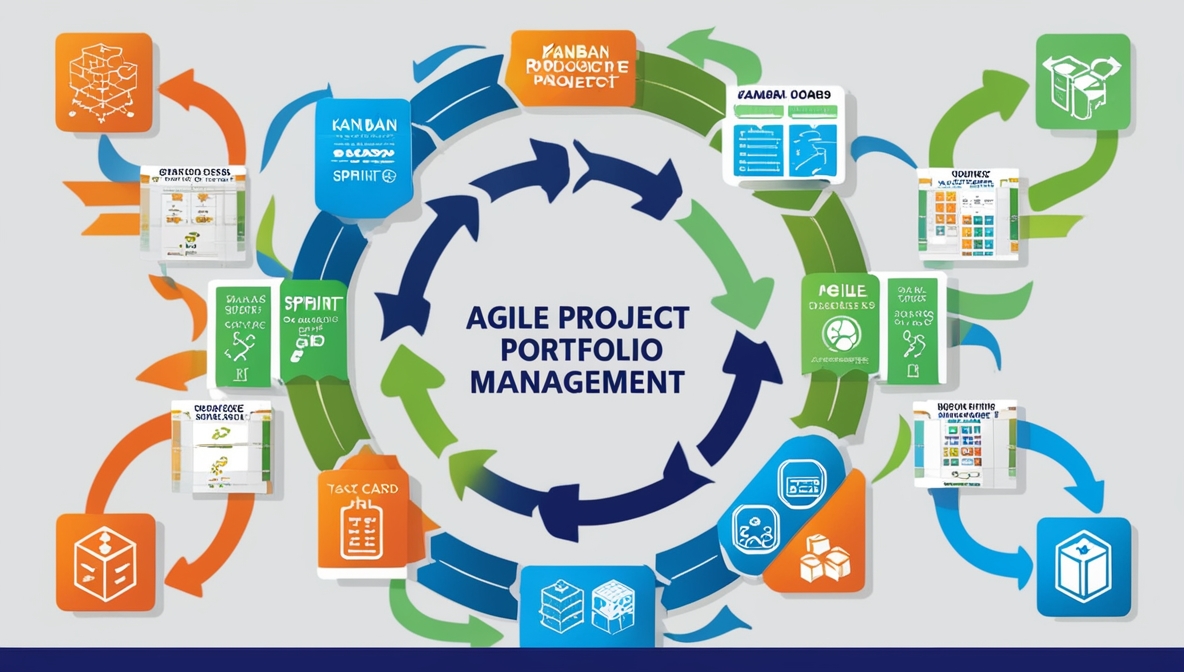A case study in the use of Agile Project Portfolio Management.
In IT, managing a portfolio of projects effectively is a crucial task. Traditional Project Portfolio Management (PPM) methods often struggle with flexibility and adaptability, key factors in today's rapidly changing technology landscape. This can lead to misaligned projects, inefficient resource allocation, and, ultimately, underachievement of strategic objectives. Agile Methodology, recognized for its iterative, flexible approach, offers promising solutions to these challenges and is increasingly being adopted by organizations for managing their project portfolios.
However, integrating Agile Methodology into PPM is not without its hurdles. Despite its potential benefits, understanding the Agile approach, how it can enhance PPM, and implementing it effectively pose significant challenges for many organizations. Leaders, particularly CIOs, often grapple with questions like what exactly Agile and PPM are, how Agile can make PPM more effective, and how to implement Agile PPM.
This project portfolio management case study is a comprehensive guide, tackling these concerns head-on. It provides a step-by-step approach to Agile Project Portfolio Management, beginning with an introduction to the basics: Agile Methodology and Project Portfolio Management.
The case study details the steps involved in traditional PPM and demonstrates how applying Agile Methodology can enhance each step, making PPM more effective. By using Agile, organizations can ensure their project portfolios are flexible, adaptive, and aligned with their strategic objectives.
The PPM case study also delves into organizations' challenges when transitioning to Agile PPM, providing insights and strategies to overcome these barriers. It underscores that while the journey may be fraught with difficulties, improved project management and strategic alignment outcomes are well worth the effort.
In conclusion, this case study is a robust, practical guide to Agile Project Portfolio Management, illuminating the path for organizations seeking to adopt a more agile, effective approach to managing their project portfolios. It provides CIOs and other IT leaders with the knowledge and tools they need to harness the power of Agile in their PPM practices, thereby enhancing their ability to deliver value and achieve their strategic goals.
This Agile Project Portfolio Management (PPM) case study offers valuable insights that Chief Information Officers (CIOs) can apply to address several real-world problems:
- Portfolio Prioritization: One of the challenges many CIOs face is determining which projects within their portfolio should be given priority. The Agile PPM approach detailed in the case study can provide a flexible framework for continuously assessing and adjusting project priorities based on strategic alignment, risks, resources, and changing business conditions.
- Resource Allocation: The iterative nature of Agile allows for dynamic resource allocation based on the current needs and status of projects. This can help CIOs manage their resources more effectively, ensuring they are deployed where they can provide the most value.
- Adapting to Change: In today's fast-paced business environment, CIOs often struggle to adapt their project plans and priorities in response to changing conditions. With its emphasis on flexibility and iteration, Agile PPM can provide the tools and strategies needed to navigate these changes successfully.
- Alignment with Business Goals: Ensuring that IT projects support the organization's strategic goals is a common challenge for CIOs. The case study's step-by-step approach to implementing Agile PPM can help CIOs align their project portfolios more closely with business objectives, ensuring that IT efforts drive the organization forward.
- Overcoming Resistance to Agile Adoption: The PPM case study also addresses the challenges of transitioning to an Agile approach, which can often be met with organizational resistance. The practical advice and strategies provided can help CIOs manage this change more effectively, ensuring a smoother transition to Agile PPM.
This case study provides CIOs with a practical and effective guide to applying Agile principles to PPM. It offers solutions to many real-world challenges they face in managing their project portfolios. By adopting Agile PPM, CIOs can enhance their ability to deliver IT projects that are timely, within budget, and aligned with their organization's strategic goals.

